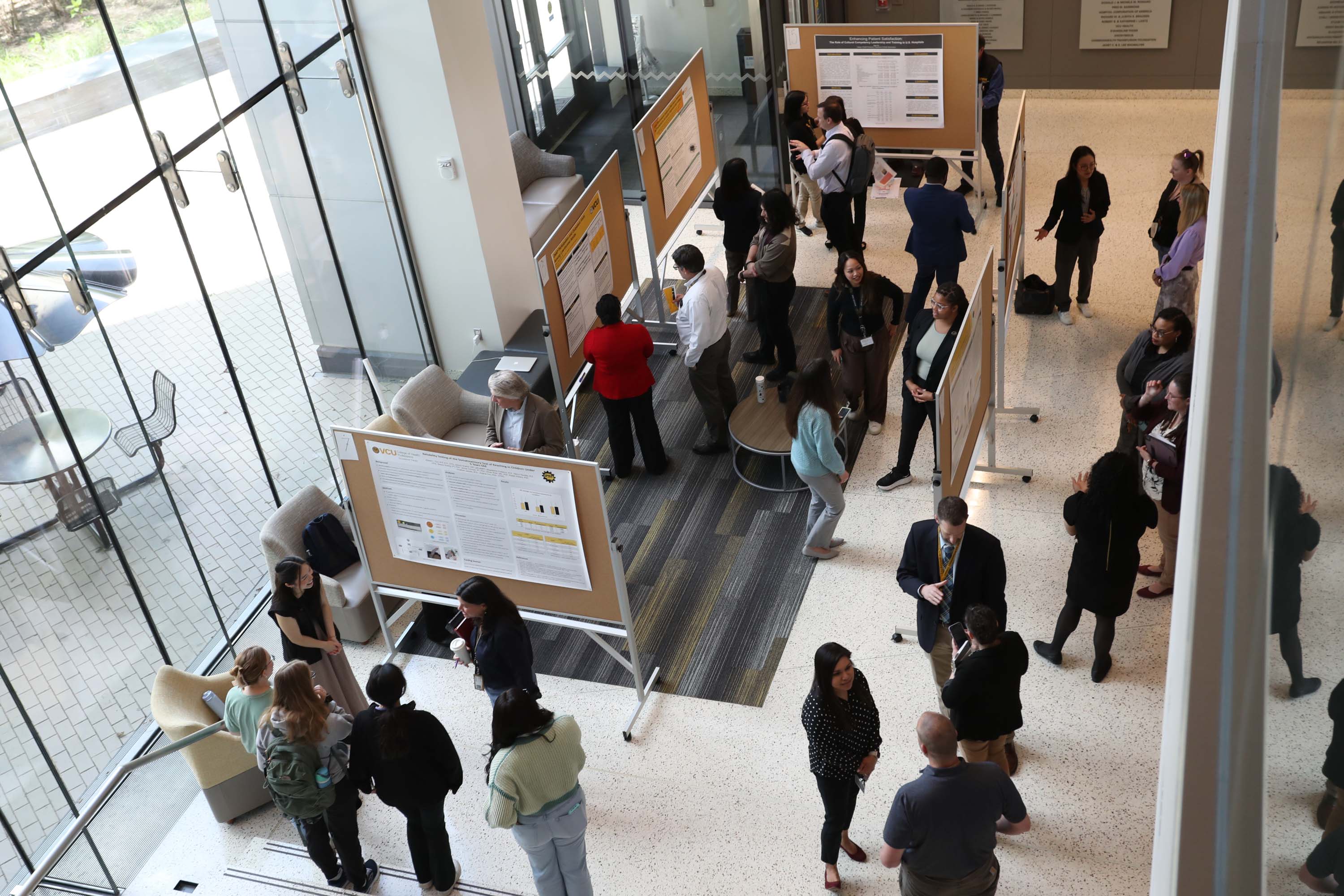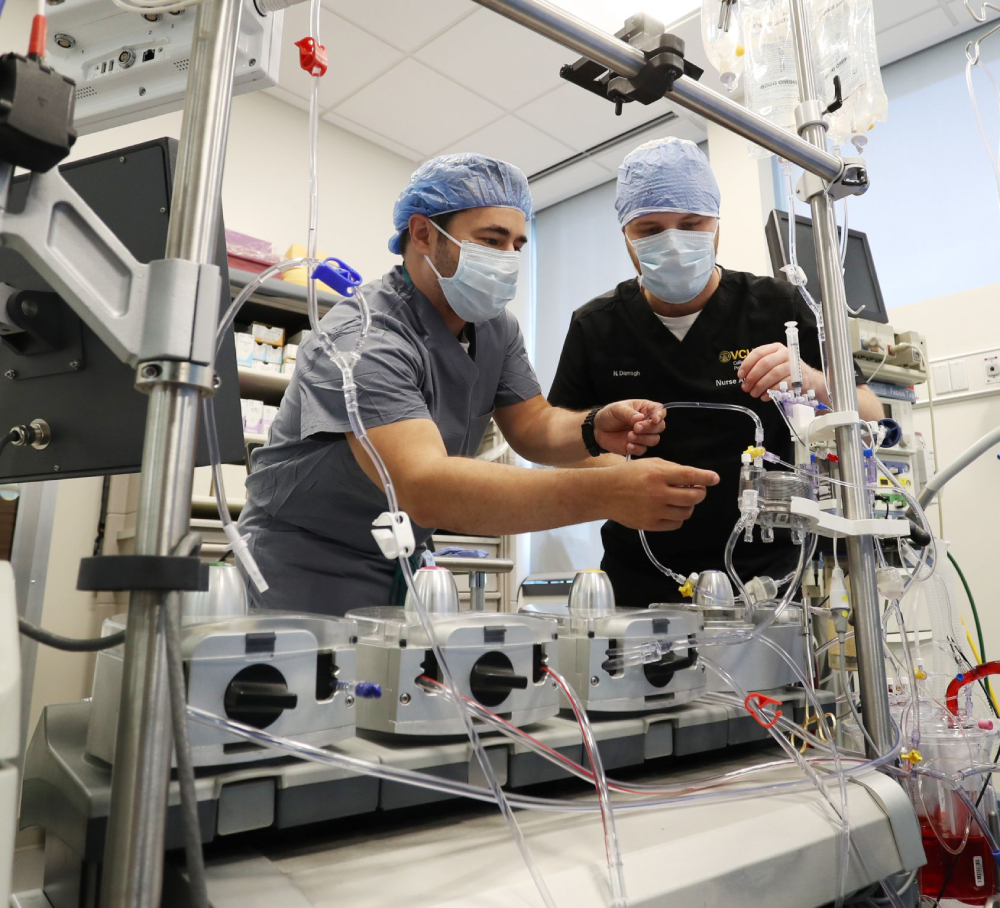Nov 5, 2025
CHP State of the College spotlights research momentum, record retention and new perfusion master’s program
At last month’s College of Health Professions’ State of the College, Dean Amy R. Darragh, Ph.D., OTR/L, outlined robust gains in research, student success and program development, while previewing next steps in strategic planning and budget stewardship.
CHP Culture and Community
Dr. Darragh highlighted the many CHP-sponsored activities and events that occurred the past year, including wellbeing activities, listening sessions, coffee breaks, and strategic plan engagement sessions. She also highlighted the importance of faculty and staff engagement at the university level, and introduced Faculty Senator Katie Shaab and Staff Senator Cyndi Finefrock to discuss current initiatives underway at the Faculty and Staff Senates.
Dr. Darragh also highlighted the important work in progress by Laura McClelland, the CHP Faculty Fellow for Promotion and Tenure, who described the new process and the revisions underway. Dr. McClelland announced that she will cover this topic in more detail at the Town Hall on Nov. 18.
Research
“We have quite a lot happening in the research space,” Darragh said, noting that expanding infrastructure remains a priority. That includes biostatistics resources, grant reviews, and compliance and regulatory support – all critical for faculty to get projects up and running. She also noted the expansion of Research Week and the excitement around student participation, “We had the largest Research Week in college history with double the number of student posters”.

She also highlighted a surge in the Scholarship of Teaching and Learning (SoTL), adding that SoTL summits and two new SOTL faculty fellows are “intentionally elevating the scholarship of teaching and learning work that’s happening in the college.”
Research: proposals up, Q1 awards already top last year
Darragh reported that proposal budgets were up 28% year-over-year to roughly $38 million, leading to total research funding of $6.6 million for fiscal year 2025. And early returns for the current fiscal year are striking. “Our Q1 total research funding has exceeded all of last year put together at $7.4 million,” she said. “Give yourselves a round.”
To illustrate the college’s interdisciplinary reach, Darragh introduced Adam Atherly, Ph.D., Seymour and Ruth Perlin Professor of Health Administration and Internal Medicine. He recently secured the R33 phase of an NIH R61/R33 award examining value assessment for novel medications, including Alzheimer’s treatments.
Atherly’s team is developing “a better way” to calculate drug value that accounts for subgroups often undervalued by current formulas, he said. Referencing the Inflation Reduction Act, he noted, “we’ve found an area of bipartisanship, which is drug price regulation.” Adding improved valuation methods could more accurately reflect the value of different medications, particularly for vulnerable older populations.
Enrollment & student success
Enrollment continues to trend upward, with student numbers across programs at 1,356 this fall. To ensure quality scales with numbers, the college is reviewing the enrollment management process to assess how it is growing and what resources might be needed. This will ensure the college doesn’t “grow too quickly and that we’re unable to deliver the quality that we want,” Darragh said.
Student outcomes remain a standout, with strong retention and graduation rates. The graduation rate is 89% among undergraduates and 95% for graduate students, with 97% of all students marking year-over-year progress.
Within six months of earning their diploma, about 95% of graduates report employment in their field of choice, well above the college’s 90% benchmark. Darragh tied those results to high-impact learning – clinical placements, internships, service learning and even study abroad – and the fact that 56% of faculty are engaging students in research.
Darragh also called attention to the college’s Student Success workload behind the scenes. Last academic year, that included 928 advising appointments and 51 student events; already this year, advising visits have already exceeded 1,800. “When we think about enrollment growth, it is really impacting our Student Success team,” she said.
New programs: perfusion master’s clears approvals, first cohort in January

Among multiple additions, Darragh announced that M.S. in Cardiovascular Perfusion program has secured the required approvals, is in accreditation candidacy, and opens with a 10-student first cohort this January.
“Applications are pouring in,” she said. To describe the program, Darragh introduced the program's director, Keith Pelletier, Ph.D., MBA.
After explaining the role a perfusionist plays in operating the heart-lung machine during surgery, Dr. Pelletier noted that the VCU Cardiovascular Perfusion program has drawn immediate interest. “The application’s been open for just a few days, but there’s about 45 students who have applied already,” he said, with inquiries coming from across Virginia and as far as Utah.
Facilities and industry support are strong. “We have a real OR that is fully functioning with all things perfusion,” he said, citing six-figure donations in equipment with more pledged by year end. Looking ahead, VCU will host a perfusion conference in 2026, leveraging Nurse Anesthesia’s established reputation.
Other additions include an undergraduate certificate in aging in the Gerontology Department and a first-in-nation undergraduate minor in research ecosystems, designed for future administrators and compliance officers. Next fall will bring an undergraduate minor in community mental health in the Department of Rehabilitation Counseling.
Finances: steady footing, central absorption of 1% cut
On the budget front, Christie Atkins, executive director of finance and research administration, said the college expects $22 million in tuition revenue this fiscal year. A $23 million budget represents “CHP spending power … what we get to be able to spend on salary, fringe [and] non-personnel,” she said, noting the line also covers the building mortgage.
The college also relies on foundation dollars, student fees, indirects from grants, continuing education and faculty services. Indirect cost distribution policies are still being finalized.
To ensure research funds fuel scholarship, Atkins reminded faculty of the Research Incentive Policy. The college has allocated $85,000 to the faculty and their faculty discretionary accounts.
Strategic planning: from ambitions to action
Darragh said the IDEAS Hub – a unit within the Dean’s Office that houses interprofessional programs, outreach and continuing education – is moving from concept to build-out under Christie’s leadership. Internal development continues through CHP Learns (research and teaching/learning sessions) and CHP Writes (dedicated time and space on Fridays, with coffee). Two Little Ram Pantries opened in the building to support student needs, with a food drive underway.
Next steps include a teaching workload and work-distribution revision, drawing on college and department perspectives.
The college also has progressed on its new strategic plan, with the steering committee unveiling draft ambition statements that were discussed during the address. In the first six months of 2026, Darragh said work groups will translate goals into “tactical, action-oriented” plans: “What do we need to have in place? And how much will it cost?”